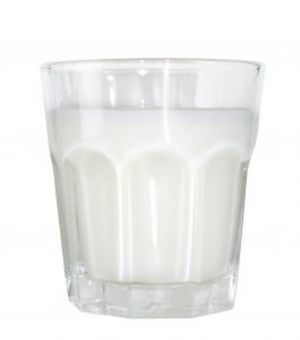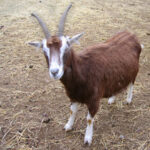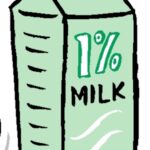When my oldest daughter was a baby, through some trial and error I noticed that she cried a lot less and slept a lot better when I didn’t consume products made with cow’s milk. Since I was breastfeeding, yummy stuff like milk on my cereal, yogurt, cheese and ice cream really seemed to make her more fussy and upset. But when I mentioned it to the pediatrician, she was dismissive. Human milk has way more lactose than cow’s milk, so if she was lactose intolerant, we’d already know about it”, she said. And I believed her.
But I stayed off the dairy products anyway. I didn’t know what to call it, but I knew that my daughter reacted to dairy. She didn’t have the diarrhea associated with lactose intolerance but she did have hard stools after consuming something made with milk. By far the biggest reaction was her temperament. Tantrums erupted out of nowhere; her tolerance level for frustration shrank to zero; and she had a hard time falling asleep and staying asleep. It was easier to just say no to a cheese pizza.
A lot more research has been done on dairy allergies. Most doctors are quick to point out that an actual allergy has life-threatening capabilities, such as anaphylactic shock. Symptoms like simply not feeling well and reacting badly are called “intolerances” because they do not threaten the body’s immune system in a serious way. Until recently, it has been hard to find any information on intolerance to dairy other than lactose intolerance. But as more and more people report similar symptoms as my daughter, more research is being done.
Simply put, lactose intolerance is when a body cannot handle the sugars or lactose in milk. Since cow milk was made for cow babies, some human babies have a hard time digesting the sugars intended for calves. The lactose in my milk, for instance, was designed to be digested by my children even if my pediatrician was correct and my milk had more lactose than that of a cow. Approximately 80% of Americans are considered lactose intolerant by middle age. The ability to digest milk and its sugars appears to decline with age.
Symptoms of a dairy allergy can include: rash, eczema, black circles around eyes, or even swelling around lips, mouth, or throat. Digestive upsets occur in the form of gas, bloating or cramping. The respiratory system can be affected and manifest itself as wheezing, itchy eyes, nasal congestion, and shortness of breath or coughing. Some children even show symptoms of inattentiveness, lethargy, hyperactivity or bedwetting as a result of dairy allergy.
A new term, called dairy hypersensitivity perhaps is the more accurate term. In hypersensitivity, symptoms can show up anywhere from two hours to two days. In my daughter’s case, symptoms such as extreme tiredness, dark circles under her eyes, and tantrum occur within 24 to 30 hours as a general rule. This sometimes makes it difficult to remember the handful of goldfish she had at Sunday School or other small amounts of dairy products.
It’s not just the obvious sources of dairy that we need to be concerned about. Those sources, called “gross” dairy such as milk, cheese, ice cream, yogurt and whipped cream. The other “hidden” sources use words like casein and whey. Casein accounts for 80% of the protein in milk, and refers to the curd that forms when milk is left to curdle. Whey is the watery part that is left over and contains the other 20% of protein in milk.
Whey and casein show up in places you wouldn’t expect. These dairy products are in bread, crackers, cookies, and sometimes even in pasta. Fortunately, there are websites available that list “safe” products; and most companies are very good at labeling common allergens, like milk.
In some cases, the milk products even breach the blood/brain barrier to reach the brain. That is when you have the symptoms of depression, mood swings, ADHD and hyperactivity.
Most people, especially in the United States, have been reared on milk and the idea that milk is the perfect food. Most parents are understandably reluctant to cut out what is a significant portion of their child’s diet. But if you suspect that milk is causing a reaction in your child, cut it out for two weeks. It takes about a month for all traces to disappear, but you should notice a marked improvement in health or behavior in two weeks. If not, you are probably looking at a different issue.
Giving up dairy isn’t the end of the world! I have been dairy free for almost 5 years; both of my girls are dairy free, and we aren’t wasting away or unhealthy. In fact, giving up an ice cream cone on a hot day is worth it to have a child who remains healthy and reasonably in control of her emotions.





